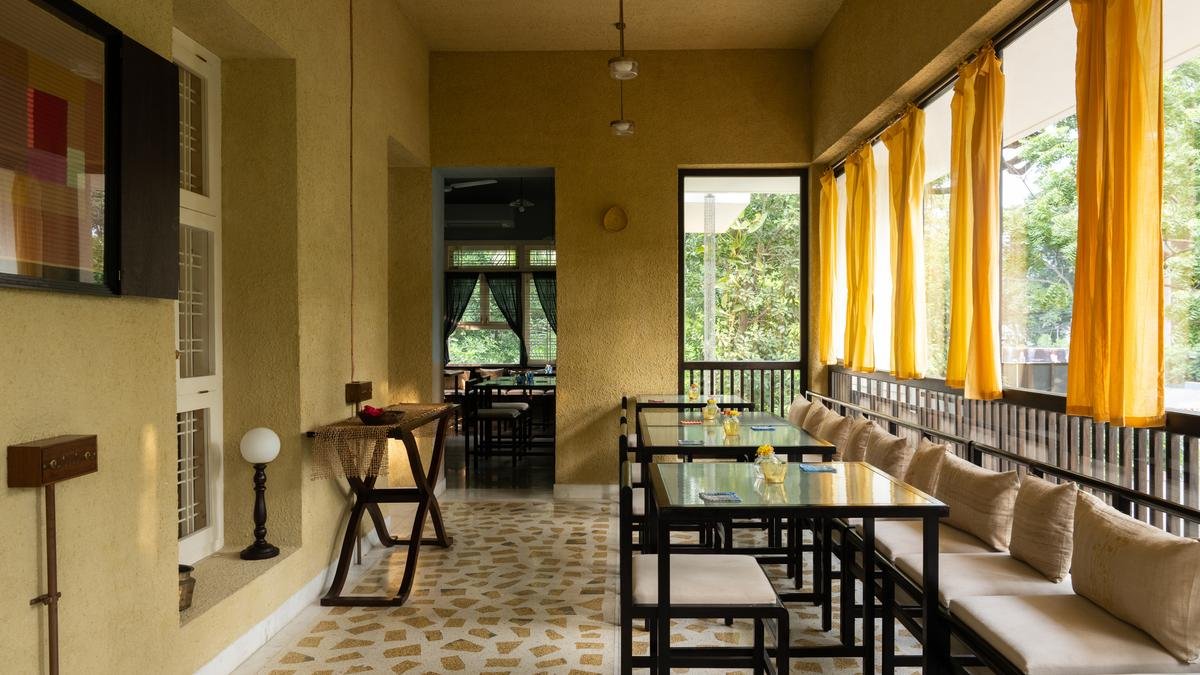Chennai’s architectural landscape breathes like a living entity. The cityscape is dotted with Indo-Saracenic, colonial, and Art Deco landmarks, their presence a strong representation of Madras, and now Chennai’s layered culture, history, and design language. But the past few years have seen a revived interest in restoring older structures, especially as the awareness in conservation has grown.
There are scores of examples, from the 73-year-old Art Deco building in Rutland Gate that now houses the multi-designer boutique, Collage, and The Woodhouse Coffee & Cocoa Co, to The Entrance Cafe in Kilpauk, which is housed in an old colonial house. The cafe’s updates includes a koi pond and a massive 10-ft. wooden door, courtesy architect Faisal Manzur.
A stroll around town manifests in many such chance encounters — each heritage building, once a grand period residence, now embraces a new chapter, and thus adaptive reuse showcases its inherent potential and lore.
Una Villa, Nungambakkam
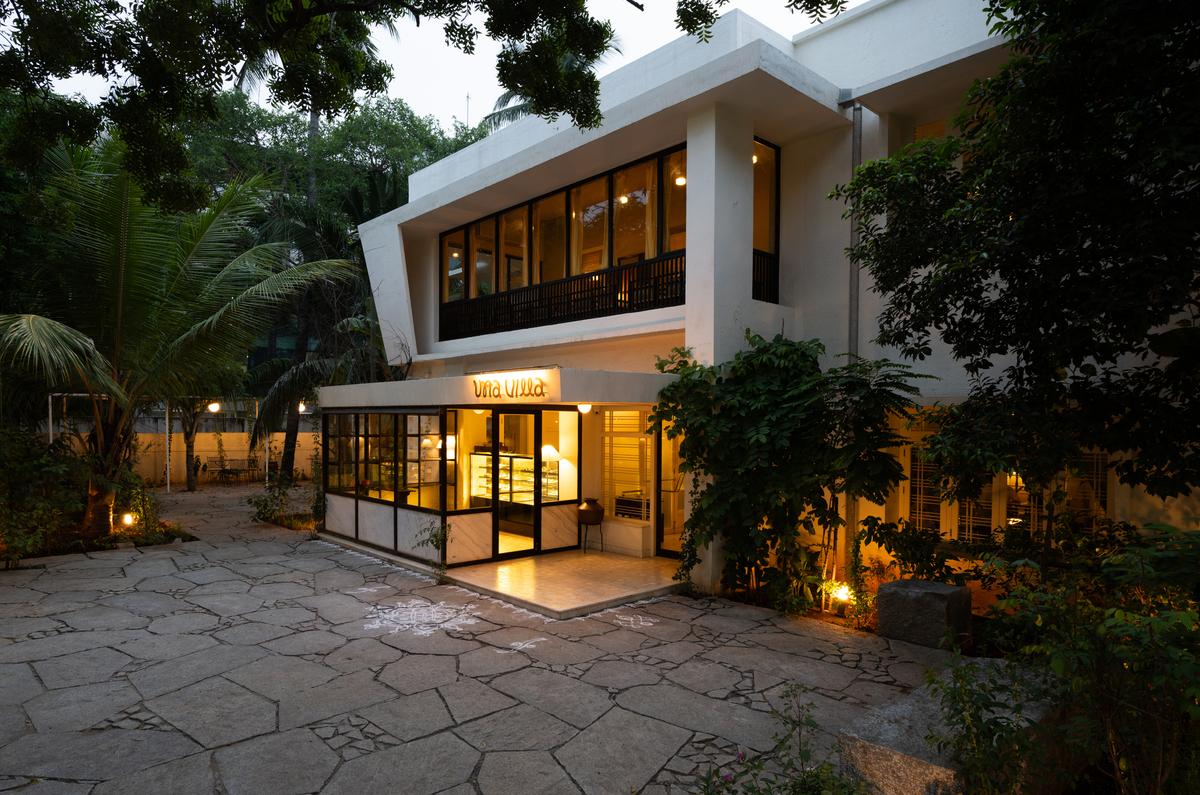
Una Villa’s gently restored structure resembles a beacon of warmth amidst the verdant embrace of the domestic garden.
| Photo Credit:
Hashim Badani
J. Rafiq Ahmed, managing director of Kothari Industrial Corporation Limited (KICL), has long championed the culinary arts. Una Villa marked a significant milestone in that trajectory, a space that Ahmed envisioned would foster intimate, high-quality dining experiences. And what ensued was a spatial sleight of hand, courtesy Anisha Murali and Denver Pereira, principal architects at u:i:make, a Chennai and Mumbai-based practice.
Ahmed’s frequent commutes along Uthamar Gandhi Road got him interested in a 1960s home and this soon evolved into a deep commitment for him and his wife, Basheera. “I was immensely drawn to its high ceilings, large windows, and symmetrical façade. I knew I didn’t want to rebuild; the structure needed to be restored,” he says.
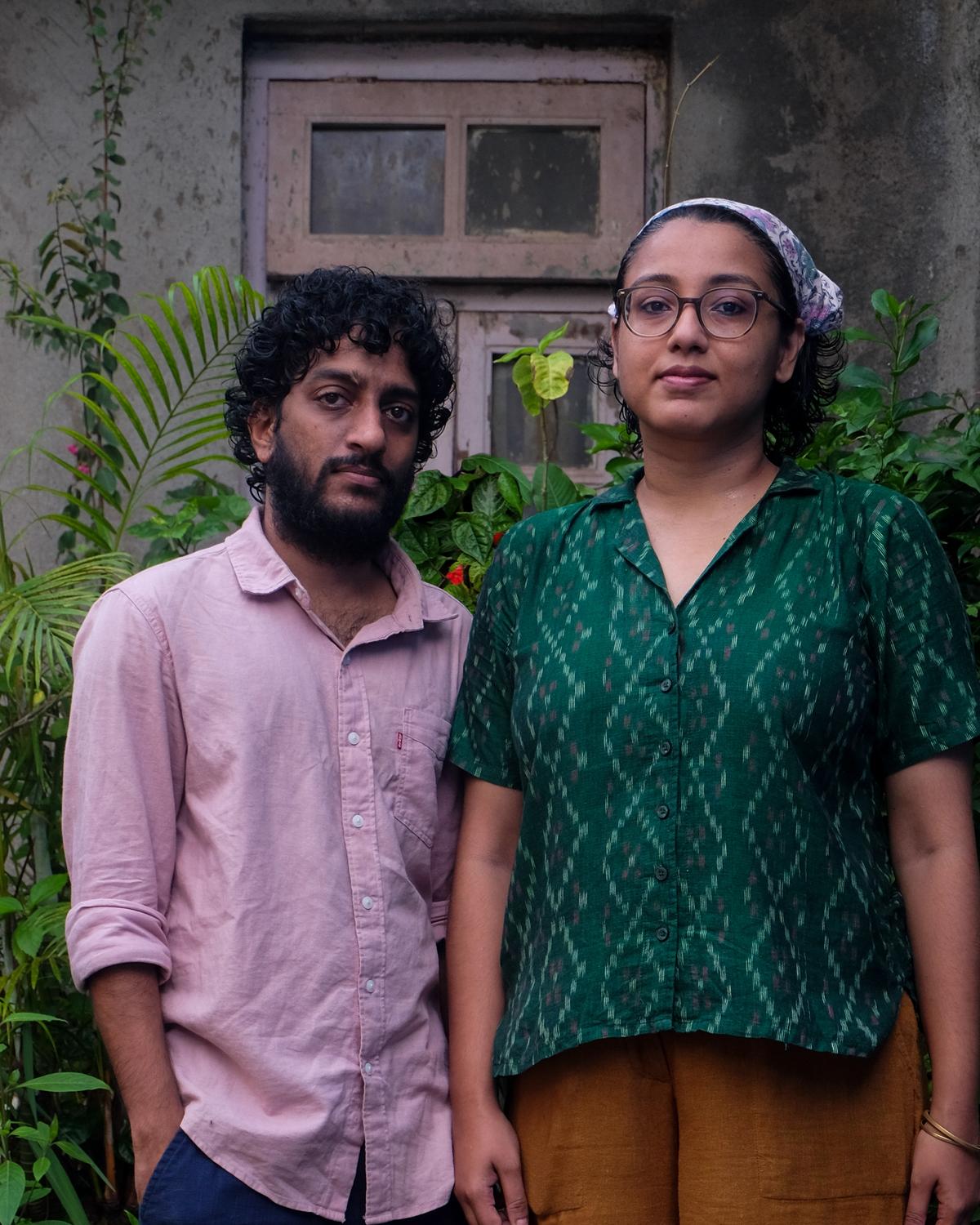
Denver Pereira and Anisha Murali.
| Photo Credit:
u:i:make
Set within a domestic garden, the 2,500 sq.ft. venue rests on a 6,300 sq.ft. land parcel. “With a deep respect for context, materiality, and everyday life, we approach spaces as a hopeful exploration. Una Villa transforms one of the area’s few remaining mid-century houses into a restaurant and bakery after years of vacancy,” highlights Murali.
In Murali and Pereira’s rendition, the bungalow’s original flow remains intact. The load-bearing walls were stripped back to the plaster beneath, revealing worn surfaces and layered colour. Pereira says, “A textured border runs along the bottom of the walls, colored to match the earth outside.”
The stairwell defines circulation, its glorious form updated with only a fresh coat of lime plaster and brass handles. Surface-mounted wiring and copper conduits make their way across the walls and ceiling, introducing ingrained movement. “Rather than erasing the past, the design builds upon it, allowing the abode’s history to shape its quiet transformation into a public space,” observes Murali.
Primrose 131, Mylapore
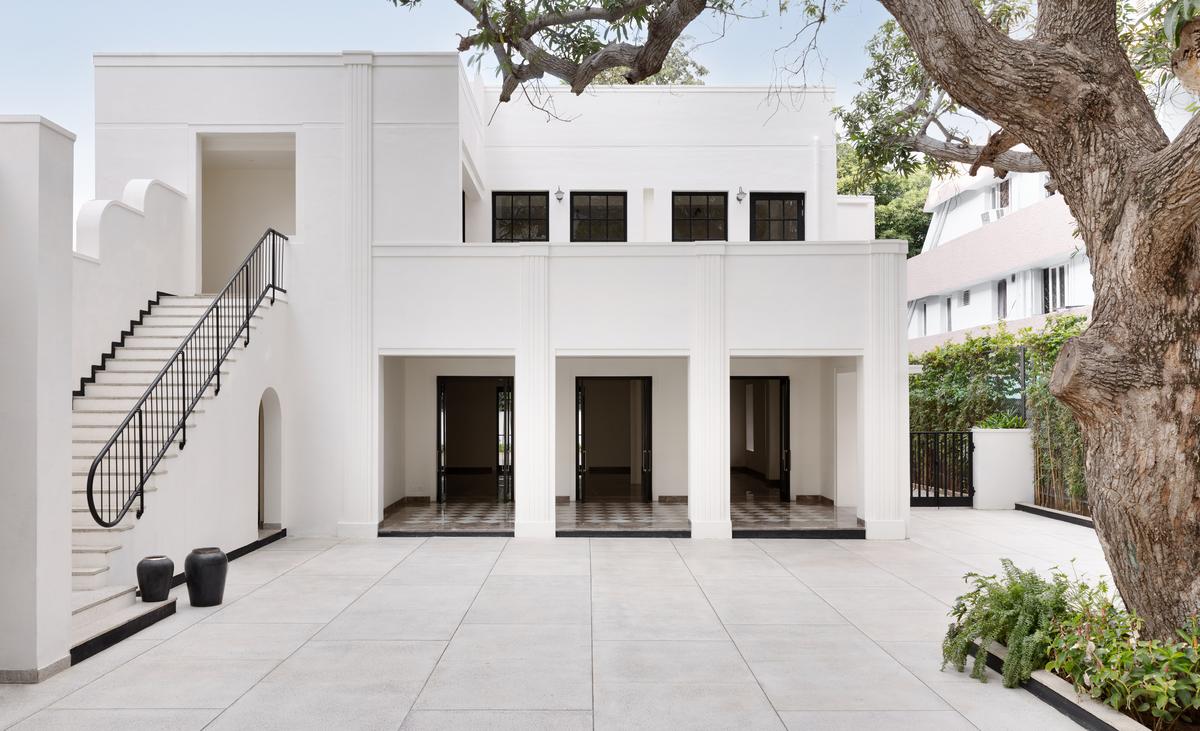
All activity comes alive under the shade of the ancient mango tree at Primrose 131.
| Photo Credit:
Gautham Krishna, Phosart Studio
Mylapore’s veins thrum with an ancient rhythm, courtesy the vivid gopurams, and the fragrance of temple flowers. Tucked in a leafy enclave is Primrose 131, an ancestral dwelling from the mid-1950s, in the care of producer Archana Kalpathi and her husband. “This was my husband’s family home. The house is synonymous with their happiest memories; every anecdote unfolds under the shade of the mighty mango tree. We wanted to extend the warmth of our home towards meaningful celebration. And that is how its adaptation into a versatile event space transpired,” recalls Kalpathi.
The motivation to breathe new life into its strong bones led the homeowners to Sruthi Reddy, principal architect at Chennai’s Ceebros Designworks. Reddy shares, “Our portfolio is a testament to the lasting legacies we craft. Each design is deeply rooted in its context, the overarching story, and the artisanship that enlivens it.”
Spanning 9,600 sq.ft., the bungalow’s identity was reconfigured by Reddy and her team, comprising Priyanka and Santhanam, in 2021. “The magnificent mango tree was our muse! Traditionally, all gatherings unfolded around the home’s courtyard and its resident tree. We wanted to evoke that atmosphere through design, creating a bridge between indoor and outdoor spaces,” Reddy adds.
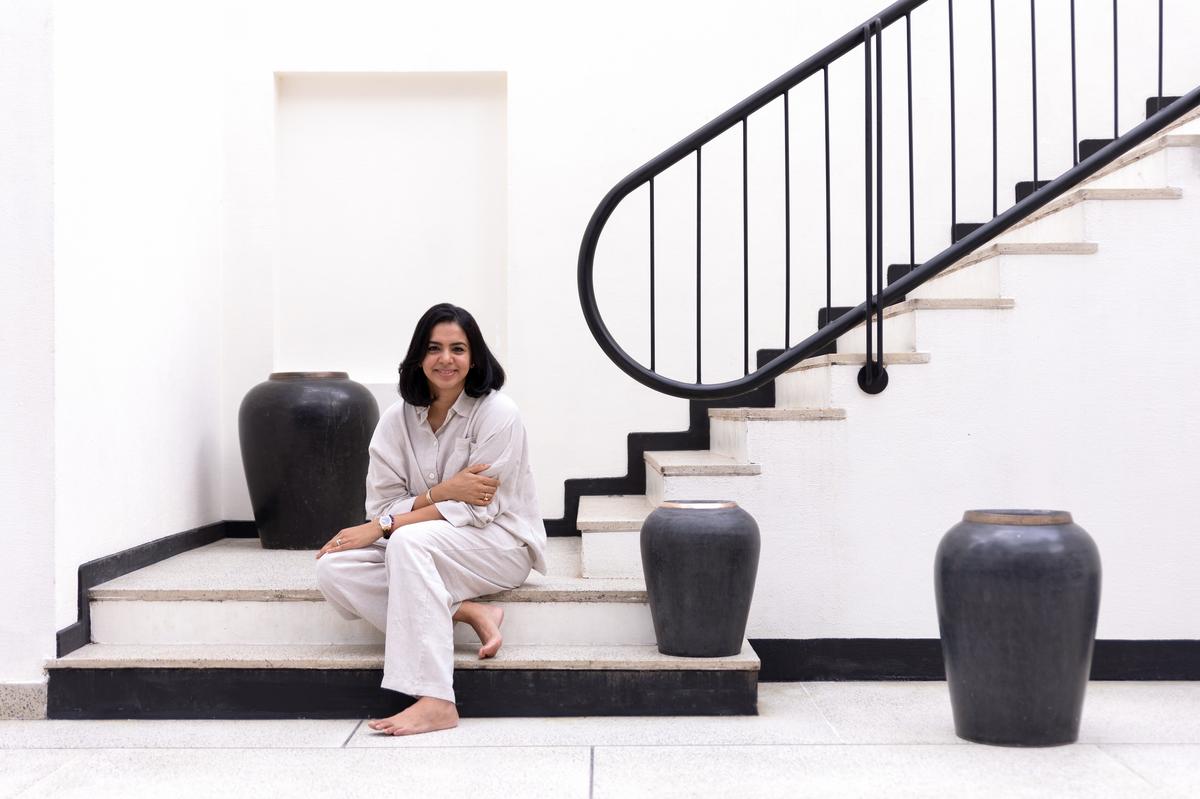
Sruthi Reddy.
| Photo Credit:
Gautham Krishna, Phosart Studio
The building’s architecture lent itself instinctively to a reprised take on Art Deco.
A monolith in white, the structure is accented in bold strokes of black — in jambs, the staircase, and lighting. The alfresco space is sheathed in a fresh white terrazzo variety by Facilini Design Lab, and flows into the verandah’s harlequin-style floors. “The staircase makes for the most loved insert. The balustrade’s gently curved form and its colour against the all-white backdrop make for a stunning vignette,” says Reddy. The interior features expansive spaces supported by slender metal columns, replacing the original floor plan’s compact rooms while preserving the building’s Madras terrace roof.
“The space is looked after like a regular, functioning home. Housekeeping services, close assessment of details, maintenance of floors, and paint touch-ups are administered per requirement,” shares Kalpathi.
Malligai – Raw Mango, Cenotaph Road
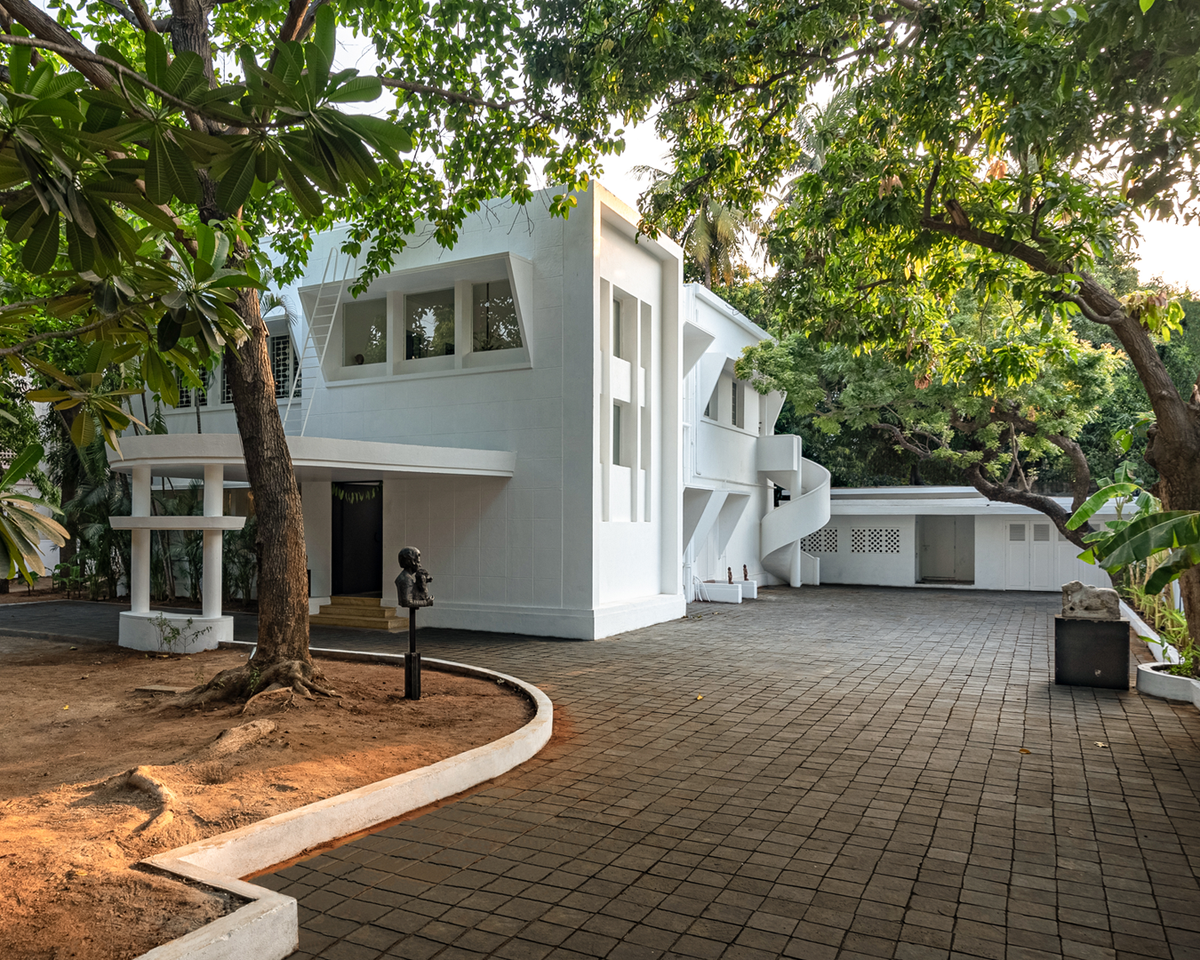
A leafy compound off Cenotaph Road houses Malligai, its identity a collage of myriad influences.
| Photo Credit:
Akshay Sharma
Anchored along Cenotaph Road is Malligai. Raw Mango’s Chennai location bears witness to the city’s rich history and its quiet march towards modernity. The story comes alive in a 5,400 sq.ft. residence with overlapping architectural styles, a space rejuvenated by Sanjay Garg, founder of Raw Mango, in collaboration with Delhi-based design studio Squadron 14, spearheaded by Adityan Melekalam.
“Akin to all our stores, the Chennai outlet also conjures an experience for our clients. We envisioned a gallery that showcases the brand’s textile offerings and fascinations. The store is inspired by the context of the building, and at the same time, we are not too burdened by it,” Garg states.
A diligent pursuit spanning over 50 residences landed Garg an encounter with the property that is now a sanctuary for connoisseurs of Indian handloom. The interior houses elements that are almost as delectable as the design house’s offerings — a sculptural staircase, mosaic floors, ornate mullions, and gently curved cornices. Garg’s curatorial prowess is apparent — the store hosts antiques collected over the years, finds from India and the world.
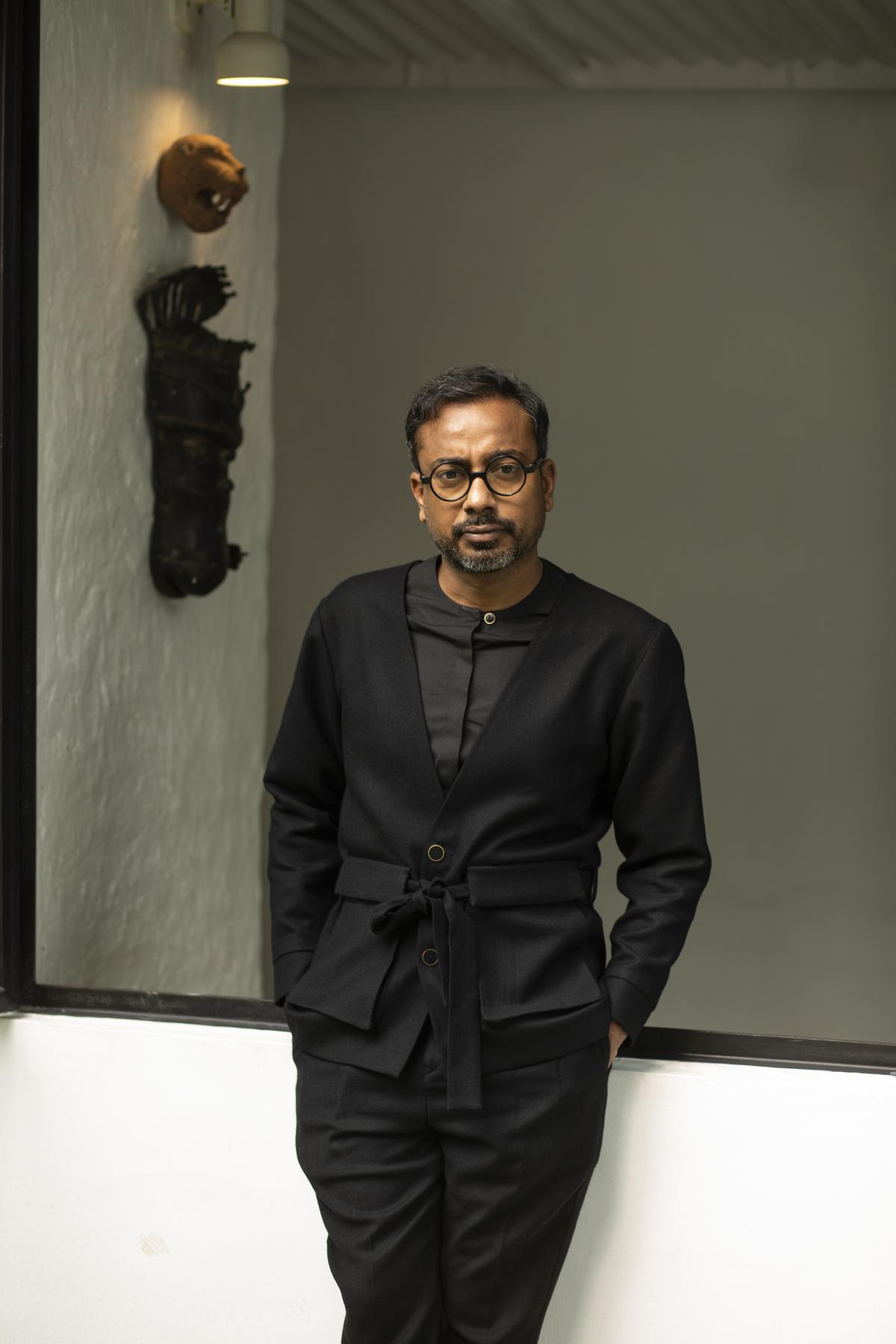
Sanjay Garg
| Photo Credit:
Amlanjyoti Bora
“The project was not about imposing a new identity but revealing the preexisting layers. The bungalow sports faint Art Deco influences and vernacular traces, but as with most things in Chennai, it’s a confluence — neither strictly traditional nor entirely modern,” notes Melekalam. For Garg, the appeal lay in the inhabited home’s distinctive architecture, which reflected the residing family’s aspirations. The challenge? “Maintaining the built form’s character and integrity to lend a design aesthetic that resonated with our manifesto,” suggests Garg.
Deconstructing the spatial layout, Melekalam elaborates, “We reconfigured the flow between rooms to make the experience more fluid. The materials and hues respond to the space’s quirks, like the original flooring. We designed most elements in-house. The museum-esque glass displays, for example, are inspired by vitrines from the turn of the 20th century.”
Holding a mirror to Raw Mango’s work, the adaptive reuse strategy embraces contradictions — treating the space as a container for ideas while absorbing myriad influences.
KUP Budan House, Alwarpet
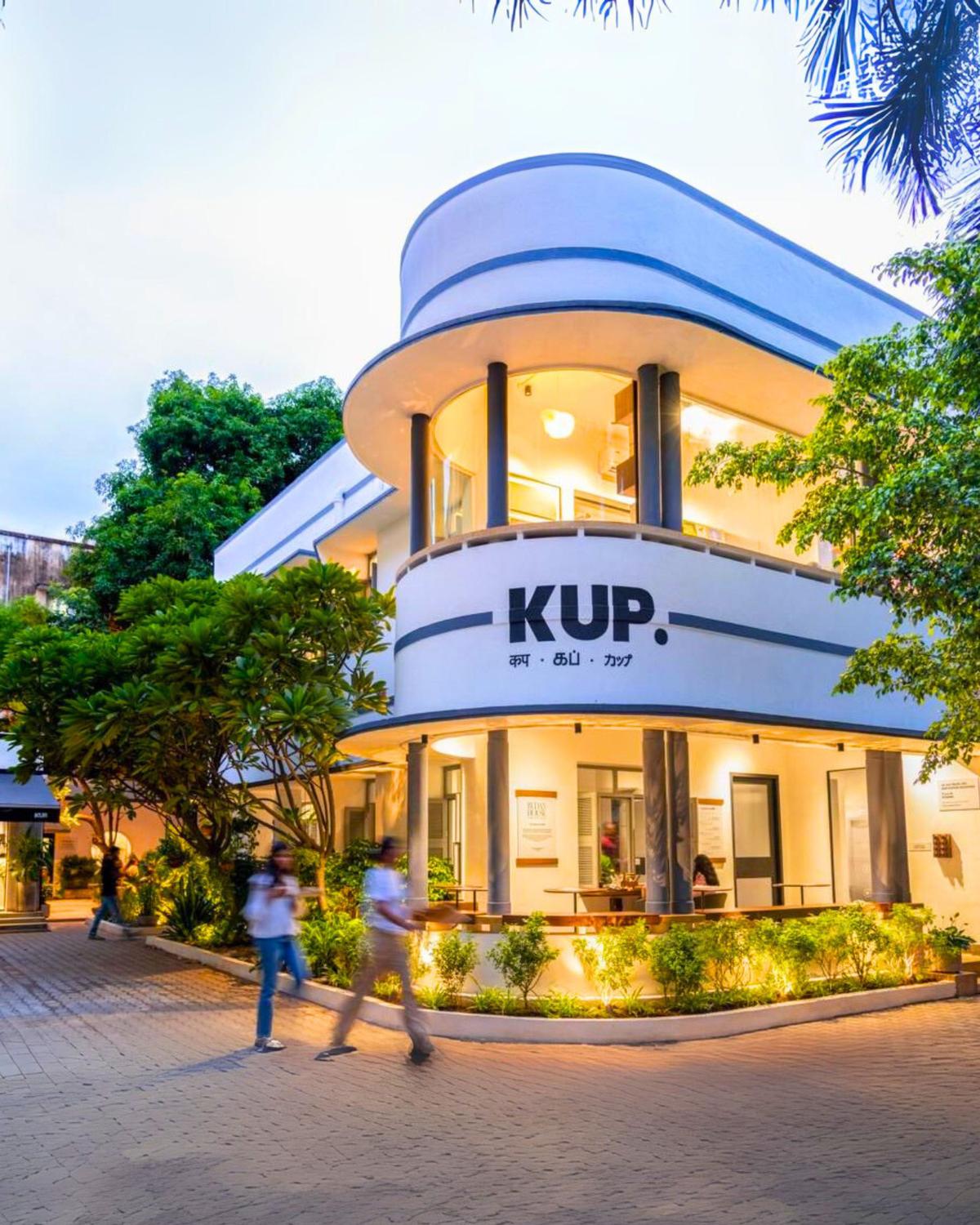
Budan House commands the streetscape with its sweeping form and monochromatic palette.
| Photo Credit:
KUP
Memory serves as a relentless compass, guiding one’s journey towards the destination their heart has always sought. “I recall a visit to veteran actor Sivaji Ganesan’s home. The breezy thinnai, a signature of traditional Tamil homes, never quite left my mind. KUP Budan House was a serendipitous find, an ode to my upbringing in Madras and this childhood memory,” Jivesh Goenka, founder of KUP Coffee Roasters, shares.
Building on successful operations in Nungambakkam, Goenka’s keen eye for design and business potential drew him to an 80-year-old, 4,000 sq.ft. home in Alwarpet, where the café opened its doors in 2024. He relies on inspiration gathered over his travels abroad, “There is a remarkable presence of adaptive reuse overseas. It was a challenge I posed to myself. I wished to recreate this — give my city a landmark!”

Jivesh Goenka
| Photo Credit:
KUP
Crafted in collaboration with Roaish Architecture + Design and Orange Elephant Interiors, the space is alive with KUP’s electric DNA. The structure’s sweeping form is unmistakable, its ivory façade animated by bold grey streaks that flow into the columns. Hand-painted lettering echoes signage from past decades, bridging different eras.
The design language flows through the restored space, in step with its past. The layout is a collage of various seating options — the airy verandah, private dining rooms, the restored backyard configured around the mango tree, peripheral seats gazing at the frangipani trees, and the popular coffee bar, which was once a derelict garage. “Community-building is central to KUP’s ethos. The variety of spaces available at Budan House strengthens events where patrons from diverse backgrounds come together to interact and converse. Each visitor finds a nook that feels like their own,” says Vidya Vijay, brand head – KUP.
“White, black, brown, grey, and orange manifest across the café, representing KUP’s visual identity. Polished mosaic floors, refurbished I-beams, Bakelite switches, exposed conduit lighting, and louvred windows speak of the site’s history,” says Goenka.
Lessons in legacy
Preserve existing trees on site whenever possible.
Choose furniture that resonates with the home’s history.
Retain original materials wherever possible. Brick, timber, and terrazzo are key examples.
Engage structural consultants and design professionals while undertaking the overhaul of heritage structures.
Survey rising road levels, waterlogging zones, and invasive root networks.
Audit old plumbing and check for wood decay.
Maintain the space like a lived-in home with regular housekeeping.
The writer is an architect and design specialist.
